Weaving Tales From the Dismal Swamp to Moral Monday Marches 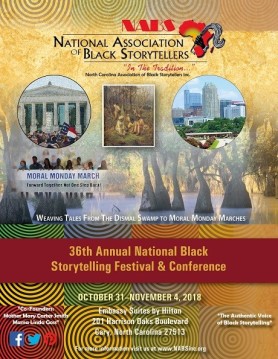
This year’s NABS’ Festival theme reminds us that in North Carolina, where o,ur Festival will be held, there is a tradition of resistance to unfair treatment and conditions. Resistance occurred with the earliest slaves brought to this country. One form that it took in North Carolina was exiles forming independent communities in the Great Dismal Swamp. Africans and African Americans endured the harshest living conditions in the swamp in order to enjoy their freedom.
The Festival theme also calls our attention to a protest movement, Moral Monday, begun in 2013 by Rev. William Barber in the great Tar Heel state. The Moral Monday movement began as a grassroots resistance to North Carolina state legislation hostile to the state’s poorer citizens and citizens of color. Again, it is the story of the demand for freedom and justice, despite harsh conditions, as many of the protesters are arrested for civil disobedience.
In telling our stories, we can find inspiration in the strength and determination of the people of the swamp and Moral Monday protesters. This post will focus on the swamp. Our next post will feature more on Moral Monday.
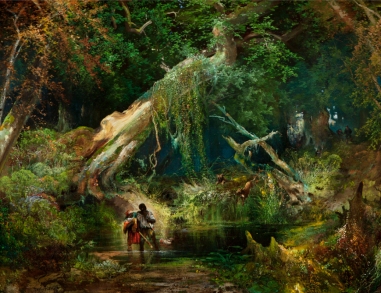
https://jubiloemancipationcentury.wordpress.com/2013/09/13/the-maroons-of-the-great-dismal-swamp/
In that place called the Great Dismal Swamp (GDS), which stretches across the border of North Carolina into Virginia, there lived a people who defied those who would enslave them. They are called Maroons, a term that may derive from the Spanish word, cimmaron, meaning wild or savage; or marron in French meaning feral or fugitive.
Historians have written much about Maroon colonies in Florida and Louisiana as well as those in South America and the Caribbean. However, with the archaeological work begun in 2004 by Daniel Sayers, PhD, professor at American University; the Great Dismal Swamp (GDS) has gained attention and the story of the unique place that it was is coming to light.
With its marshy land, the thick growth of trees and vines, the overwhelming presence of flies, mosquitoes and other insects along with snakes, vermin and larger wild animals, it was considered impenetrable by Europeans.
At times one could not see more than three (3) feet ahead and even a compass could not help one to stay on course. It was a despised place, a place to be avoided or as the title of Sayres’ 2014 book states, “A Desolate Place for a Defiant People.” This made it a perfect place for Maroons to claim their freedom and create their communities.
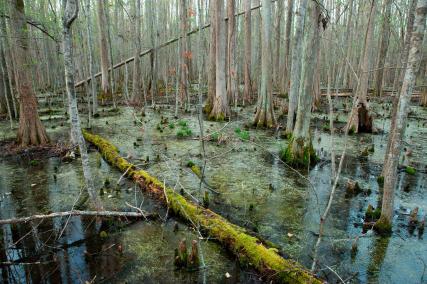
Inside the densely forested swamp today, says Sayers, “There are at least 200 habitable islands. There may have been thousands of maroons here.” (Allison Shelley). . Read more: https://www.smithsonianmag.com/history/deep-swamps-archaeologists-fugitive-slaves-kept-freedom-180960122/#jSPqJIqt4ADFFP53.99
Sayers’ archeological findings tell us that Maroons occupied GDS from 1620 up until the Civil War. He believes that initially they were indigenous Americans and Africans. Indians had always hunted on the fringes of the swamp which was rich with wild life. Later they were fleeing the ravages and enslavement visited upon them by the newly arrived Europeans. Runaways and free Negroes who found it difficult to maintain their freedom in the prevailing culture also came to live in the swamp. The archeological evidence suggests that this was not primarily a space where runaways came to relax for a bit before continuing their northward journey, though some did. This was home where their children were born, lived and died!

During more than ten years of field excavations, archaeologist Dan Sayers has recovered 3604 artifacts at an island located deep inside the swamp. (Allison Shelley). Read more: https://www.smithsonianmag.com/history/deep-swamps-archaeologists-fugitive-slaves-kept-freedom-180960122/#jSPqJIqt4ADFFP53.99
In the deepest part of the swamp, as many as 2000 to 3000 Maroons lived in small communities on separate islands of high ground. They built a fort, cabins on stilts and what appears to be several water reservoir pits. They had systems of governance and shared labor and were largely self-sufficient. By some accounts, there were people who lived in GDS for generations.
Unlike Maroons in other places, they rarely ventured out of the swamp to raid nearby plantations. They grew crops, raised hogs and chickens and otherwise depended on the bounty of nature to feed, clothe and house themselves. One source of possible contact noted was with enslaved laborers in work camps built on the swamp borders. These laborers were brought to cut timber and produce shingles from cedar and cypress for several months each year. They did not penetrate the depths where the Maroons found safety.
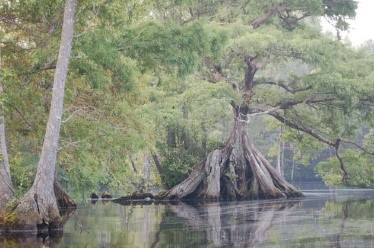
However, some of the maroons surely interacted with shingle getters. Overseers in these camps reported that some workers collected far more shingles than was humanly possible and they claimed provisions, based on their production, far in excess of other laborers. Enslaved laborers received supplies and some pay, above what was paid to their owners, based on the volume of work produced making it easy for them to pay Maroons, mostly in supplies. Overseers in these camps were not interested in chasing after Maroons who might have been in the interior of the swamp. Even slave catchers couldn’t be enticed with extra bounty.
The story of GDS Maroons is a story of strength, knowledge, skill and determination; a story of people who chose freedom in an inhospitable space over slavery. There, for generations, they created a new life for themselves and their families. There are informative and inspiring stories here that we as NABS must tell. That’s what we do!
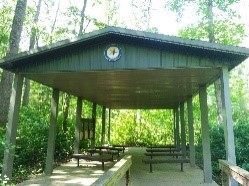
The Great Dismal Swamp was established as a National Wildlife Refuge in 1974. Today, a pavilion commemorates the swamp’s contribution as a part of the Underground Railroad. (photo: Amy Johnson)
Check NABS Talking for our next post on Moral Monday Marches
Join NABS in Cary NC, October 31st through November 4th for the 36th Annual National Black Storytelling Festival Conference where inspiring stories are born, live and reign.
Resources
Sayers, Daniel O., 2014. A Desolate Place for a Defiant People: The Archaeology of Maroons, Indigenous Americans, and Enslaved Laborers in the Great Dismal Swamp, University Press of Florida, Gainesville.
Diouf, Sylviane A.,2014. Slavery’s Exiles: The Story of the American Maroons, New York University Press, New York; Chapter 8, The Great Dismal Swamp.
Simpson, Bland, 1990. The Great Dismal: A Carolinian’s Swamp Memoir, University of North Carolina Press, Chapel Hill.
Deep in the Swamps, Archeaologists Are Finding How Fugitive Slaves Kept Their Freedom, by Richard Grant. Smithsonian Magazine, September 2016. https://www.smithsonianmag.com/history/deep-swamps-archaeologists-fugitive-slaves-kept-freedom-180960122/
The Great Dismal Swamp and the Underground Railroad: U.S. Fish & Wildlife Service brochure, https://www.fws.gov/uploadedFiles/Region_5/NWRS/South_Zone/Great_Dismal_Swamp_Complex/Great_Dismal_Swamp/UGRR2.pdf
The Great Dismal Swamp and the Underground Railroad, http://perquimans.lostsoulsgenealogy.com/aa/dismalswampugrr.htm